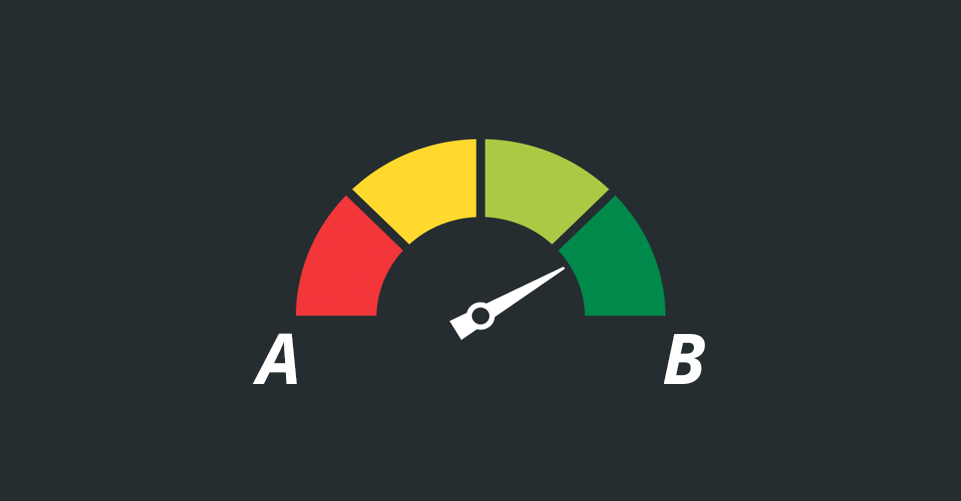Drop the gut feeling. Make good decisions based on insight.
Your new web solution is up and running. So, what happens next? It can be tempting to lower your shoulders a bit and tackle other projects, but you know the better; It's now the work really starts.
It is now that we have to keep an eye on whether the solution is applied as it was planned, while at the same time we have to consider the feedback that comes in. From customers, suppliers, partners — not least colleagues and other departments of the company.
Contents: How to obtain user insights?
Google Analytics
Hotjar
User Testing
Customer feedback
A/B testing
In the work of optimizing a website, many people can be involved and have an opinion about the needs, functionality, design, text and much more. Perhaps even those who have no basis for making such decisions. As a product owner, it is then important to be able to make decisions for further development based on facts and good insights, rather than personal opinions and hypotheses.
How to get user insights?
We have extensive experience in Helping our customers to be better online, but there are also things you can do yourself to get started.
Google Analytics — or other similar analytics tools — is crucial when it comes to knowing how a web solution works. With Google Analytics, you can find out which traffic sources drive visits to your website, you get a better relationship with traffic numbers and trends, you can find out which pages are most visited, you can access user statistics and much more.
When you are well acquainted with how your web solution usually performs, both in terms of visitor numbers, revenue, time spent on the page, conversion rate, etc., you are also much more observant of any discrepancies that may occur. Whether it's in a positive or negative sense.
Hotjar is an analysis tool we use for several of our customers. With this tool, you can quickly and easily obtain user data, giving you a better understanding of how users navigate your website.
Hotjar gives you access to several useful features, such as heatmaps and user recording.
With heatmaps, you get a quick visual representation of “hot zones” on selected pages of your website. By hot zones we mean areas where users move the mouse cursor or prefer to click. This allows you to find out which buttons, links and images users click on, but also, for example, how far down the page users scroll.
It is now that we have to keep an eye on whether the solution is applied as it was planned, while at the same time we have to consider the feedback that comes in. From customers, suppliers, partners — not least colleagues and other departments of the company.


Through user recording, you can see and learn how users navigate around your website.
- Are they using the website the way you thought?
- Is the path from the user entering the page to conversion the way you envisioned?
- Does the user experience any bugs that you had not detected?
- Maybe you discover some dead links?
The purpose of reviewing user recordings is precisely to get acquainted with the way users navigate the website. And the more user recordings you look through, the clearer it will also become for you whether something should be optimized. Because if something turns out to be a recurring problem in the videos you watch, it's probably a problem for very many. Are you in doubt why the users do as they do, it's nice to test your hypotheses further in a user test.
To create the best user experiences, you need to know your users' needs, and how they use your website to address these needs. And this is precisely what user testing is all about. By observing how actual users solve specific user tasks, you gain insights, get feedback, and detect any errors or omissions, so you can use your observations to make your web solution better.

The advantage of doing user tests, preferably in addition to observations in Hotjar, is that in addition to observing the user's action, you get to take part in their thoughts and intentions, which is very valuable to understand why they do what they do.
We have good experience in moderating and facilitating user tests, but this is also something you can get started with yourself. User testing doesn't have to be made that complicated. Ask colleagues, family or acquaintances to test for you. Ask to observe -- either live or via screen. The most important thing is that it be tested, and that it is tested suffices. That one person can't find Bookbutton, is not a facet that the button needs to be changed. If 4 out of 5 people do not find the button, on the other hand, it is an indication that something should be done.
Give the testers a concrete user task to solve:
- Find product x and make a purchase
- Read the title of this article. What do you think you're going to get an answer to once you've read the article? Did it match the assumption?
- Sign up for our newsletter
- Submit a request via our contact form
Make a note of how the test subjects navigate and whether they have any challenges along the way. Maybe you discover something you hadn't thought of?
Here you can read several good reasons to prioritize user testing.
It's always someone who want to give a feedback about your web solution, and whether it's in the form of bragging or input on improvements, it's nice to give them an opportunity to be heard. Here there are several tools that can be used, and we have good experience with both Hotjar and Task Analytics.

How can you obtain customer feedback?
- Give the customer the opportunity to provide feedback after they have made a purchase. E.g. “What do you think it was like to shop in this online store”?
- Set up a feedback opportunity on important articles on your site. “Did you get an answer to what you were wondering in this article?”?
- Find out what the goal of user visits is: “Why did you visit this website today?”
If you have a call center or a “Contact Us” email, you can also start by looking into the inquiries that come in here. Are there any questions that go back? Is there anything we can do to reduce the number of inquiries to these contact points?
“I think the buy button needs to be left further up the page, can we move it?”, or “I think we need to change the text on this button”. These are scenarios that you, as a product owner, can certainly recognize. The easiest thing would perhaps be to move the button, and change that text, but what purpose would that have? “Believe” is the key word here, and it's not good enough. At this time, we have no basis to know whether this is an appropriate change and, in the worst case scenario, it could lead to worse outcomes.
In order not to make changes that may adversely affect the results of the website, such changes should be tested, so that the decision made is based on actual results. The way we recommend doing this is to A/B tests. As the name implies, we then run a test with two versions of the website, and send a certain proportion of traffic to the two different versions. Then we can easily see which version works best. The winner, the one with the best performance, is the one you choose to spend further. This way you can constantly make small adjustments that step by step improve the user experience and result.
At Increo, we have experience with Optimizely, which is the market leader in A/B testing.

Some insight is better than no insight
As you understand, access to — and analysis of — user data is what you need to have a sound basis for further optimization of your web solution. Without this as a basis, it is impossible to know where to start. Therefore, this is very important for us in working with both new and existing solutions. It should also be important to you as a product owner.
The benefits of user insights are many:
- You are user-centered and empathize with your users.
- You get a good basis for decision making and can make well-reasoned decisions.
- You save time and resources by doing research ahead of time — then you avoid the cost of changing back because it didn't work out the way you thought.
- You will get a good knowledge of your own web solution.
- You are constantly working on optimizing your web solution, constantly providing users with a better user experience.
Need help making more insight-based decisions? Get in touch with us!




